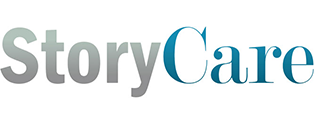An ad hoc meeting to discuss issues, realign resources and modify the plan.
Author Archive
Huddles
Wednesday, November 30th, 2011Two Challenge Rule
Wednesday, November 30th, 2011It is important to voice your concern by advocating and asserting your statement at least twice if the initial assertion is ignored (thus the name, “Two-Challenge rule”). These two attempts may come from the same person or two different team members. The first challenge should be in the form of a question. The second challenge should provide some support for your concern. Remember this is about advocating for the patient. The Two-Challenge tactic ensures that an expressed concern has been heard, understood, and acknowledged (HOOAH!).
CUS
Wednesday, November 30th, 2011Using the CUS technique provides another framework for conflict resolution, advocacy, and mutual support. Signal words, such as “danger,” “warning,” and “caution” are common in the medical arena. They catch the reader’s attention. “CUS” and several other signal phrases have a similar effect in verbal communication. When they are spoken, all team members will understand clearly not only the issue but also the magnitude of the issue.
- First, state your Concern.
- Then state why you are Uncomfortable.
- If the conflict is not resolved, state that there is a Safety issue.
How Can Storytelling Improve Team Performance?
Monday, November 28th, 2011In the context of improvement, I like to think of stories as powerful catalysts for action. Tribal peoples long ago developed a keen understanding of this effect, and nurtured their skills at constructing and telling stories to engage their people from an early age to explore alternate approaches to the challenges of surviving in hostile environments. In those settings, rigid thinking most often led to responses that were out of touch with the demands that dynamic circumstances placed daily on a clan or tribe. Inflexibility could be costly, and often deadly, as is the case in healthcare settings.
For teams to function at the highest level with regards to protecting patients from harm while at the same time providing caring touch in every interaction, all of the team members must share a common mental model for what that means. I believe that one of the fastest and most efficient approaches to attaining such a model is through meaningful, constructive conversation focused on a relevant issue. This is where a powerful story comes in. Stories engage the mind in a particular, unique fashion. We now know that the mind has schemata or patterns that it is using to scan every communication with another person. One of the most powerful of these is known as “narrative schemata.” Research has demonstrated that as we listen to another, our mind is scanning what is being shared with reference to this schema, and stays engaged to the degree to which the “information” conforms to 7 progressive steps, which you will agree after reading them, conforms with the very structure of what we commonly refer to as a story:
- Introduction of a setting and characters;
- Explanation of state of affairs;
- An Initial event;
- Emotional response/statement of goal by the protagonist;
- Complicating action;
- An Outcome;
- Reactions to outcome.
Imagine a story about a key behavior such as cross monitoring and the fact that its performance by the key actors in the story actually is the difference between the life and death of a patient. As the team listens to this story, they will have in a sense all shared vicariously in the experience of saving this patient by practicing these behaviors. Then, imagine the team sharing all of the past experiences and behaviors they have witnessed or participated in related to cross monitoring, or its absence. This is also what stories evoke—connections with other spheres of knowledge and experience that are related, thereby facilitating the growth of our knowledge and understanding. In the span of a few minutes of conversation spurred by the story, the team can coalesce around the importance of this life saving team strategy, and thereafter becomes catalyzed in every situation to be aware of whether or not they are practicing cross monitoring. Such an awareness becomes the foundation for change.
This is what we have been witnessing when teams gather to listen to a story using the processes developed within the StoryCareTM system. In the space of just a few days, teams begin demonstrating new behaviors that would have typically taken months or even years to engender employing traditional training models. In doing so, they are tapping into an ancient practice for which each of us is wired, and which has served to help people survive the most hostile environments imaginable. And yes, environments even more inhospitable and dangerous than hospitals!
How are You Using the Power of Story to Transform Care?
Wednesday, November 16th, 2011We have been using stories since the beginning of time to make sense of our world. Stories told as ‘cautionary tales’ warn us of dangerous threats to our safety. The very personal stories of Josie King, Jesica Santillan, Elaine Bromiley, the Sheridan family and the Quaid twins are powerful testimonies of real danger, system failures, uncoordinated care and preventable harm. Over the past decade, these stories and many others like them have become catalysts for change within our healthcare system.
I have had the distinct pleasure to serve as a facilitator of these transformative experiences with thousands of healthcare professionals over the past 8 years and can personally attest to the power of these stories to transform attitudes, behaviors, and perceptions. Most of these stories were shared in the context of our patient safety and quality improvement training sessions related to TeamSTEPPS®, patient-centered care, and professional behaviors. These stories provided necessary context, instant connection and profound urgency. A couple of reflective questions following the video stories got the conversation started. How did this story make you feel? What can we learn from this story?
As many listeners wiped tears from their eyes, some remained stoic; still others would shake their heads in disbelief. The first responses were usually shared in a soft voice as though the speaker wanted to make sure it was safe to say what they were feeling among their colleagues. Responses became louder now and more frequent; one reaction building on another like bricks in a wall. Then, without warning, the true power of the story is unleashed. Someone shares their own story. Now we’ve made a real connection and the stage is set for experiencing change.
Please share ways and examples of how you are using stories to transform care in your healthcare organizations.
Share Your Story
Friday, October 7th, 2011Do you have a story about an improvement challenge? Please share it with us!
Contact Us
Friday, October 7th, 2011How It Works
Friday, August 12th, 2011Further Reading
Monday, April 4th, 2011Professional Behaviors
Improving Teamwork and Communication
- Improving Teamwork and Communication with TeamSTEPPS
- Patient Safety Leadership Walk Rounds
- TeamSTEPPS Essentials.ppt / TeamSTEPPS Essentials.pdf
- The Human Factor-The critical importance of teamwork and communication in providing safe care
- The Prevention of Retained Foreign Bodies After Surgery
- Psychological Safety in Healthcare Teams
- Sterile Cockpit-Limiting Distraction for Patient Safey
- As Doctors Use More Devices, Potential for Distraction Grows
The Patient Experience
- Achieving an Exceptional Patient and Family Experience of Inpatient Hospital Care
- Berwick on patient centeredness
- Care Transitions Coaching
- HTT Patient Experience White Paper
- Health Coaching Performance Assessment
- Health Coaching for Patients
- Principles of Motivational Interviewing
- Using the Power of Story to Improve the Patient Experience
- Improving Patient Experience AOL Video
Patient Safety and Quality Improvement
- Change Management – How to Achieve a Culture of Safety
- Checklist for Prevention of Central Line Associated Blood Stream Infections
- The 5 Rights of Medication Administration
- Prevention of surgical site infection: the WHO Safe Surgery Checklist and more
- The Human Factor- The critical importance of teamwork and communication in providing safe care
- A case for safety leadership team training of hospital managers
- The Essential Guide for Patient Safety Officers
- The Essentials of Patient Safety
- Implementing Human Factors in healthcare
- Errors (and safety) are a team effort
This Cycle’s Story
Monday, February 21st, 20111st month’s Story



